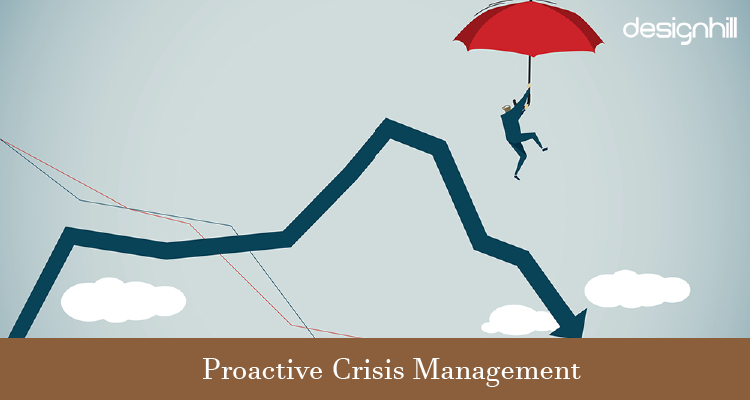Last updated on November 23rd, 2022
Far too often we see the initial impact of a disaster or crisis, dwelled upon for too long. The recent outbreak of the novel Covid-19 virus, for example, has been no exception. Most businesses are still reeling and feeling the effects. But with every crisis, it’s important to take a step back and start working on how to manage your response so your business can recover faster. In this post, you will learn how to rebrand during the crisis by following 5 transformational tips.
There’s a beautiful line from Rudyard Kipling’s poem ‘If’ that is never too unconnected from the human psyche. “If you can, meet with Triumph and Disaster and treat those two imposters just the same.” While the immediate anxiety makes it seem almost impossible to navigate, the experience of any given business crisis can almost always present an opportunity for betterment.
Before we get ahead of ourselves though, let’s consider what constitutes a business crisis and go over some commonly turned to crisis management approaches.
What exactly is a Business Crisis?
Business crises usually stem from any unexpected problem (or tragedy) that puts the stability of an organization at risk. The current pandemic dilemma is undoubtedly an external crisis outside of any company’s company’s control and its effect has been inescapable. This is why we thought we’d partly explore this topic through that lens.
Many businesses have been forced to pivot in very real ways. Case in point: a recent study examined Facebook ads and found that imagery depicting human contact through things like “travel” has decreased by 30% while ads using symbols like sick emojis and targeted terms like “rest” are spiking.
With travel restrictions being what they are, it would really suck to run a travel agency or airline right now. While we’re on the topic of transportation and crisis, let’s touch on the automotive industry and Nissan’s recent saga which saw the former chairman, Carlos Ghosn, arrested and fleeing from financial misconduct charges.
With worldwide sales plummeting, and imploding alliance with Renault and Mitsubishi and Ghosn actively laying blame on Nissan execs, the company’s new president and CEO, Mr. Makota Uchida, came to be at the helm.
In the spirit of rebranding, Nissan has redesigned its logo to feature a “thin, light, and flexible” look that better reflects the company’s aspirations to enter the modern digital age.
When you redesign the new logo of your company using an AI-powered logo maker or with the help of graphic designers, it comes with a commitment to creating a better corporate culture.
In such scenarios, different opinions are welcome and human and health factors are prioritized so employees and wider global networks of suppliers and partners can feel safe alike. The business crisis may be far from over, but it’s a start.
Types Of Crisis Management Approaches
To effectively survive a business crisis or rebrand your business, you need to work out plans for how best to resolve given situations.
Here Are Some Of The Top Crisis Management Approaches Typically Used To Address Business Crises
01. Proactive Crisis Management
Proactive crisis management anticipates a potential crisis and works to either prevent or prepare to address it. While not all crises can be averted, being forewarned does translate into being forearmed in many cases. Risk management in and of itself refers to coming up with as many contingency plans as possible while staying on the lookout for threats.

02. Responsive Crisis Management
Responsive crisis management is used in cases like Nissan where both a financial and personnel crisis merged and required a timely response. The signs were there, but the alliance couldn’t control the actions of Ghosn and predict that things would play out the way they did.

In a truly responsive crisis management style, Nissan communicated with stakeholders, informed employees, and got to work developing a plan of action to remedy the situation and ensure better checks and balances are in place in the future. The end goal of this type of crisis management is to reassure – and then some.
03. Recovery Crisis Management
Finally, recovery crisis management is used in instances when it’s already too late to prevent damage. The hotel industry in the face of the coronavirus pandemic is a great example.
It’s still too soon to understand the long-term effects, but in the meantime, hoteliers are scrambling to salvage the situation and prepare for future travel as best as they can.

Marriott International, for example, launched a new Global Cleanliness Council to focus on sanitizing the imagery of its hotels.
Hospital-grade disinfectant is now being used to clean guest rooms, lobbies, gyms and other public areas while the emphasis is placed on a holistic approach to taking care of our guests and associates. Pivoting to focus on safety in the context of COVID-19 is how they’re hoping to recover.
Transformational Tips To Employ
Now that the ‘what’ of crisis management is explained, below are some actionable steps you can consider taking to address the ‘how’ of recovering and rebranding.
01. Have A Plan
Again, by developing a crisis management plan, you are better able to handle situations as they arise. Preparing a plan can help you identify and altogether avoid unmitigated risks that result in a crisis.

It’s important to have very clear objectives when devising plans. The first objective should be to protect any persons who may be endangered by a crisis, whether they are employees or the general public. It’s also extremely important that key audiences be kept informed. So consider also developing a corresponding crisis communication plan.
02. Identify A Designated Spokesperson
Speaking of staying informed, if a crisis could potentially impact the health or well-being of customers, the general public, or employees, it may attract media attention. Given the speed at which information travels, you’ll want an identified mouthpiece for your organization. Your objective should be to have your business speak with a consistent and conciliatory voice.

03. Build Goodwill By Being Open And Honest
If your organization was doing well before the crisis, it likely means that you have the trust and support of customers. The current crisis need not translate into your demise. Just keep in mind that few things damage your image and business quite like a lack of honesty and transparency do.

Customers may be willing to forgive a mistake. However, they are less likely to forgive being lied to. Following a responsive crisis management approach and being as open and transparent as possible can help stop rumors and defuse potential media frenzies.
Transparency should be projected through all communications channels: news interviews, social media, internal announcements, etc.
04. Communicate Promptly, Often And Clearly
Forgive me for waxing poetic again by quoting wise King Solomon of old who said, “there is an appointed time for everything under the sun.” When a crisis hits, I cannot stress enough how important it is to communicate promptly.

Take, for example, the case of Dominos Pizza. In 2009, two employees filmed a prank in the restaurant’s kitchen and posted it online.
Within a few days, thanks to the power of social media, they ended up with felony charges and over a million disgusted viewers. Domino’s was slow to react, waiting two days before acknowledging the situation.
They offered an apology, but according to The New York Times, consumer perception of the brand had turned negative within hours. As a general rule, it’s better to over-communicate than to under-communicate.
So update stakeholders early and often. Because we live in a time of 24/7 news cycle thanks to social media. Your crisis plan must be to keep up.
05. Capitalize On Social Media
According to Statista, it’s estimated that approximately 3.6 billion people are using social media around the globe, up from 3.4 billion in 2019. With numbers like these, it should come as no surprise when I recommend that you focus a considerable part of your crisis management strategy or rebranding on your social media accounts.

Social media also has the advantage of being instantaneous and allows you to connect with an audience that is already interested in what you have to say. So say. And keep saying. Ensure your followers are appraised on challenges and progress made.
Use social media marketing strategies and tools to your advantage. If possible, consider enlisting the help of relevant influencers to aid in the delivery of your message. All you do, never overlook the power of social media when rebranding post-crisis.
Another Example:
In 1982, seven people died after taking extra-strength Tylenol pills that had been laced with deadly potassium cyanide. The company responded immediately by pulling 31 million bottles of Tylenol off the shelves and stopping all production and advertising of the product.
It also got involved with the Chicago Police, FBI, and FDA in the search for the killer, offering a $100,000 reward. After the crisis had been dealt with, Johnson and Johnson reintroduced Tylenol with new tamper-resistant packaging and $2.50-off coupons. This response is regarded as one of the most successful sequences of crisis management in history.
Conclusion
Though a crisis is sure to test the resilience of your organization, it doesn’t have to spell its doom. Through proper planning, good communication, and taking advantage of appropriate guidance, you can overcome any crisis, even one as impactful as the coronavirus pandemic.
